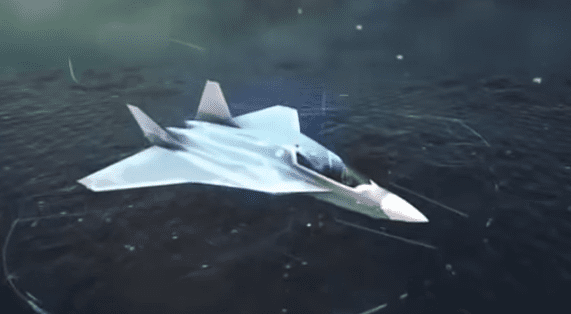Ed. Note: France and Germany, through Airbus and Dassault, are partnering on a sixth-generation European fighter to replace the country’s respective fifth-gen offerings beginning in about 20 years. The two companies are also working together to improve Airbus’ manufacturing practices across the company. This story from sister site Defense Daily provides an update on Franco-German military cooperation working toward the sixth-gen fighter. Read on for details.

A rendering of the planned Airbus-Dassault sixth-generation fighter. (Airbus)
A two-year study set to begin in February could determine the possible design of France and Germany’s next-generation weapon system – to include a new fighter aircraft, unmanned platforms and upgraded weapons and sensors – but until the study’s results come in, a French Air Force senior official is keeping details close to the vest.
Berlin and Paris awarded a joint concept study contract Feb. 6 to Airbus Defence and Space and Dassault Aviation to develop a proposal for the Future Combat Air System (FCAS) meant to replace France’s Dassault-built Rafale fighters and Germany’s fleet of Eurofighter Typhoons, the countries’ two defense ministers announced Wednesday. The starting date for the study is Feb. 20 and will run for two years, they said.
The study will aim to identify “preferred baseline concepts for its major pillars such as next-generation fighter (NGF), remote carriers (RCs) and a system of systems and associated next generation services” and evaluate the operational and technical feasibility of such concepts, as well as its program feasibility, according to a press release by the two companies. The study will also present joint demonstrator and technology needs. The initial study contract is worth about $74 million.
The joint study will help the two nations evaluate the proposed common system, relative to their own specific needs and priorities, French Air Force Chief of Staff Gen. Philippe Lavigne told reporters Feb. 7 during a media roundtable at the Air Force Association in Arlington, Virginia. Spain has also expressed interest in the future system to replace its Boeing F/A-18 Super Hornet fleet.
“When the time comes, we will have other countries,” Lavigne asserted. But he emphasized that there is a “real determination” from France and Germany to move forward with the program because “it’s a need for our security, but it is also a need for our industry.”
The next-generation system is expected to consist of several platforms, to include a manned “new generation fighter” that would be outfitted with new and upgraded weapons, and a set of unmanned systems, or “remote carriers” that would be linked via the cloud. The goal is to reach full operational capability by 2040, but Airbus and Dassault plan to have initial demonstrators ready for launch at the upcoming Paris Air Show.